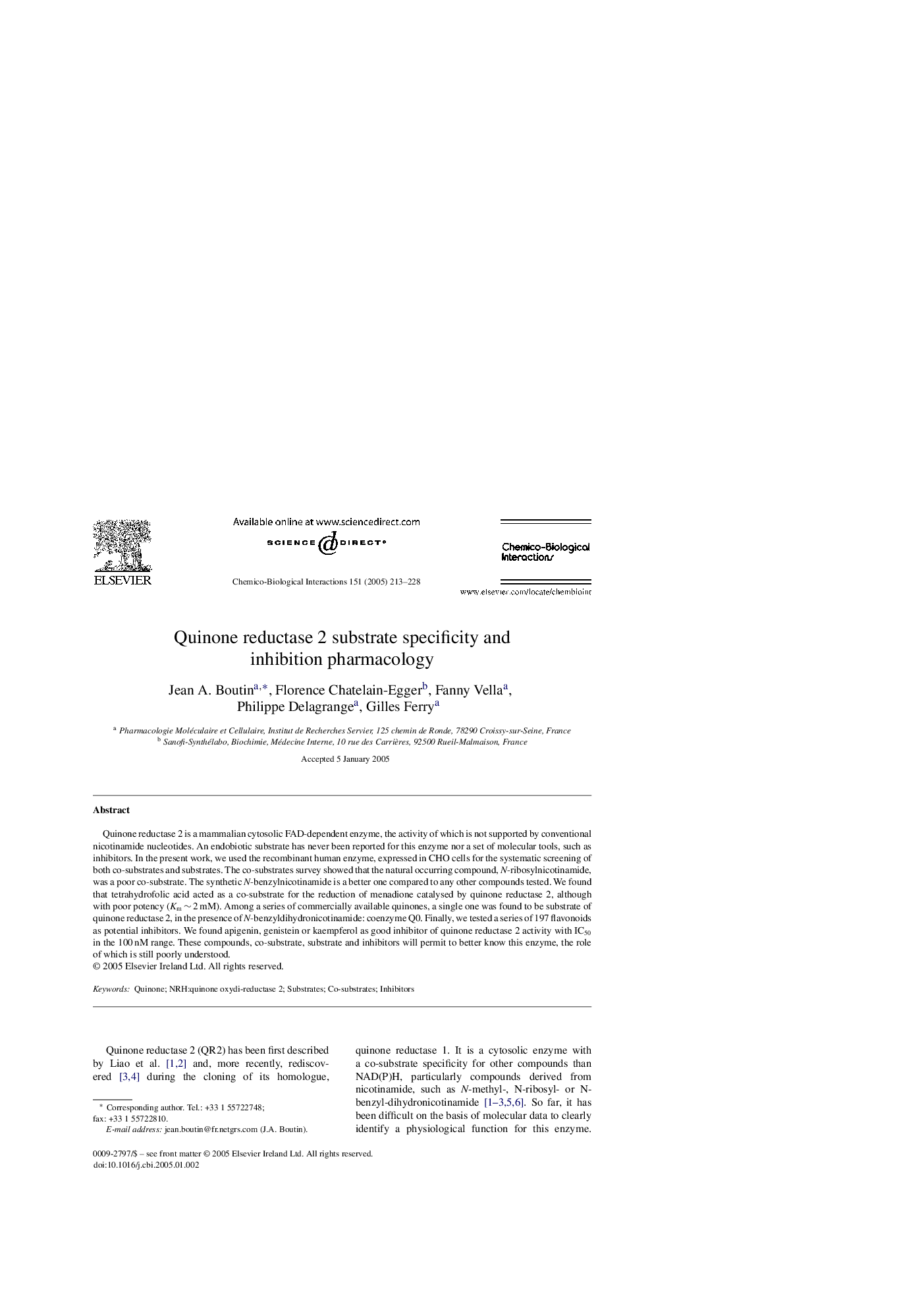| Article ID | Journal | Published Year | Pages | File Type |
|---|---|---|---|---|
| 9028818 | Chemico-Biological Interactions | 2005 | 16 Pages |
Abstract
Quinone reductase 2 is a mammalian cytosolic FAD-dependent enzyme, the activity of which is not supported by conventional nicotinamide nucleotides. An endobiotic substrate has never been reported for this enzyme nor a set of molecular tools, such as inhibitors. In the present work, we used the recombinant human enzyme, expressed in CHO cells for the systematic screening of both co-substrates and substrates. The co-substrates survey showed that the natural occurring compound, N-ribosylnicotinamide, was a poor co-substrate. The synthetic N-benzylnicotinamide is a better one compared to any other compounds tested. We found that tetrahydrofolic acid acted as a co-substrate for the reduction of menadione catalysed by quinone reductase 2, although with poor potency (Km â¼Â 2 mM). Among a series of commercially available quinones, a single one was found to be substrate of quinone reductase 2, in the presence of N-benzyldihydronicotinamide: coenzyme Q0. Finally, we tested a series of 197 flavonoids as potential inhibitors. We found apigenin, genistein or kaempferol as good inhibitor of quinone reductase 2 activity with IC50 in the 100 nM range. These compounds, co-substrate, substrate and inhibitors will permit to better know this enzyme, the role of which is still poorly understood.
Related Topics
Life Sciences
Environmental Science
Health, Toxicology and Mutagenesis
Authors
Jean A. Boutin, Florence Chatelain-Egger, Fanny Vella, Philippe Delagrange, Gilles Ferry,
